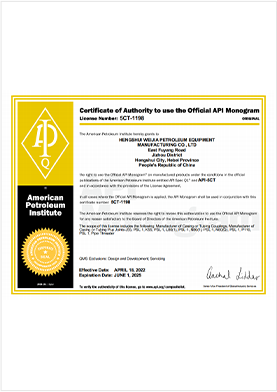- Afrikaans
- Albanian
- Amharic
- Arabic
- Armenian
- Azerbaijani
- Basque
- Belarusian
- Bengali
- Bosnian
- Bulgarian
- Catalan
- Cebuano
- Corsican
- Croatian
- Czech
- Danish
- Dutch
- English
- Esperanto
- Estonian
- Finnish
- French
- Frisian
- Galician
- Georgian
- German
- Greek
- Gujarati
- Haitian Creole
- hausa
- hawaiian
- Hebrew
- Hindi
- Miao
- Hungarian
- Icelandic
- igbo
- Indonesian
- irish
- Italian
- Japanese
- Javanese
- Kannada
- kazakh
- Khmer
- Rwandese
- Korean
- Kurdish
- Kyrgyz
- Lao
- Latin
- Latvian
- Lithuanian
- Luxembourgish
- Macedonian
- Malgashi
- Malay
- Malayalam
- Maltese
- Maori
- Marathi
- Mongolian
- Myanmar
- Nepali
- Norwegian
- Norwegian
- Occitan
- Pashto
- Persian
- Polish
- Portuguese
- Punjabi
- Romanian
- Russian
- Samoan
- Scottish Gaelic
- Serbian
- Sesotho
- Shona
- Sindhi
- Sinhala
- Slovak
- Slovenian
- Somali
- Spanish
- Sundanese
- Swahili
- Swedish
- Tagalog
- Tajik
- Tamil
- Tatar
- Telugu
- Thai
- Turkish
- Turkmen
- Ukrainian
- Urdu
- Uighur
- Uzbek
- Vietnamese
- Welsh
- Bantu
- Yiddish
- Yoruba
- Zulu
casing and tubing connections
Casing and Tubing Connections An Overview
In the oil and gas industry, the extraction of resources requires sophisticated technology and precise engineering techniques. Among these techniques, the connection of casing and tubing is crucial for ensuring the integrity and efficiency of drilling operations. Casing and tubing serve distinct purposes in the production of hydrocarbons, and understanding their connections is vital for successful drilling and completion operations.
Casing The Foundation of Well Integrity
Casing is a series of steel pipes that are inserted into the drilled borehole to stabilize the wellbore, prevent collapse, and isolate different geological formations. It acts as a barrier against the migration of fluids between different strata, thereby protecting both the environment and the well itself. Casing is installed in segments, with each segment being connected using various types of couplings or connections.
The choice of casing type depends on a range of factors, including the depth of the well, the pressure and temperature conditions, and the geological characteristics of the area. Common casing types include surface casing, intermediate casing, and production casing, each serving specific purposes throughout the drilling and production phases.
Tubing The Production Pathway
Once the well has been drilled and cased, tubing is installed within the casing to facilitate the production of oil or gas. Tubing is smaller in diameter compared to casing and is manufactured to withstand the high pressures encountered during production. It serves as the pathway for hydrocarbons to flow from the reservoir to the surface.
Connections between tubing segments, similar to casing, are critical for the integrity of the production system. The most common connection used for tubing is the threaded joint, providing a reliable seal under high-pressure conditions. Other connection types, such as welded and integral connections, are also utilized depending on the specific requirements of the operation.
Connection Types and Considerations
casing and tubing connections

There are several types of connections for both casing and tubing, each with advantages and disadvantages. The most widely used connection types are
1. Threaded Connections Utilizing male and female threads, these connections are common due to their ease of installation and maintenance. However, they can be susceptible to galling and may require thread compound to ensure a leak-proof seal.
2. Welded Connections By welding the ends of the pipes together, welded connections create a strong and permanent bond. They are less likely to leak and perform well in high-pressure situations. However, welding requires careful execution and inspection to avoid weak points.
3. Integral Connections Designed with a thicker wall, integral connections improve strength and eliminate potential leak paths at the joint. They are particularly beneficial in high-stress environments. However, these connections can be more challenging to install and require specialized equipment.
Quality Control and Testing
Ensuring the quality and reliability of casing and tubing connections is paramount for the success of drilling operations. The oil and gas industry adopts stringent quality control measures, including non-destructive testing (NDT) methods, to evaluate the integrity of connections. Techniques such as ultrasonic testing, magnetic particle testing, and X-ray inspection are commonly used to detect flaws or weaknesses in the connections.
Additionally, proper installation is essential. Workers must follow industry best practices and guidelines to minimize risks, including the use of appropriate torque settings during the connection process. Regular monitoring and maintenance are also key to ensuring long-term efficiency and safety.
Conclusion
In summary, the connections between casing and tubing are fundamental to the success and safety of oil and gas extraction. Each connection type has its specific applications, advantages, and potential drawbacks that must be carefully considered during the drilling and completion phases. As technology continues to advance, innovations in connection design and testing will undoubtedly enhance the efficiency and safety of operations, further supporting the demands of the ever-evolving energy landscape. Understanding and implementing best practices for casing and tubing connections are essential for maximizing resource extraction while minimizing environmental impact.
-
Tubing Pup Joints: Essential Components for Oil and Gas OperationsNewsJul.10,2025
-
Pup Joints: Essential Components for Reliable Drilling OperationsNewsJul.10,2025
-
Pipe Couplings: Connecting Your World EfficientlyNewsJul.10,2025
-
Mastering Oilfield Operations with Quality Tubing and CasingNewsJul.10,2025
-
High-Quality Casing Couplings for Every NeedNewsJul.10,2025
-
Boost Your Drilling Efficiency with Premium Crossover Tools & Seating NipplesNewsJul.10,2025







